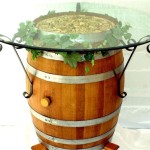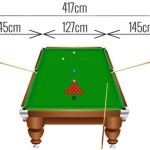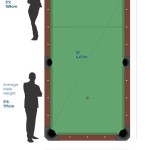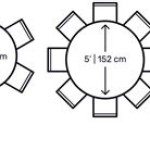Study Table Design for Kids' Room: Optimizing Learning and Development
A child’s room serves as a sanctuary for rest, play, and, crucially, learning. Within this space, the study table assumes a pivotal role, acting as a dedicated zone for academic pursuits, creative projects, and intellectual exploration. The design of a study table, therefore, warrants careful consideration, taking into account functionality, ergonomics, aesthetics, and the specific developmental needs of the child. A well-designed study table fosters concentration, promotes organization, and contributes significantly to a child's overall learning experience.
The impact of the learning environment on a child's academic performance and overall well-being is well-documented. A cluttered, uncomfortable, or poorly lit study space can lead to distractions, fatigue, and reduced motivation. Conversely, a well-organized, ergonomic, and visually appealing study area can enhance focus, encourage prolonged periods of study, and instill a sense of ownership and responsibility. Therefore, selecting and implementing the appropriate study table design becomes an investment in a child’s academic success and developmental growth.
Key Considerations in Study Table Design
Several key considerations underpin the successful design of a study table for a child's room. These encompass ergonomic principles, spatial constraints, storage needs, and the child's individual preferences. Integrating these factors into the design process ensures a functional and supportive learning environment.
Ergonomics: Ergonomics plays a critical role in preventing musculoskeletal issues and promoting good posture, particularly during extended periods of studying. The height of the table and chair should be appropriately matched so that the child can sit with their feet flat on the floor and their elbows at a 90-degree angle when working. Adjustable height tables and chairs offer flexibility and allow the furniture to grow with the child, ensuring continued ergonomic support. The depth of the table should also be sufficient to accommodate books, notebooks, and a computer without requiring the child to lean forward excessively. Furthermore, the surface of the table should be non-reflective to minimize eye strain. Proper lighting is also considered part of the ergonomic equation, with optimal placement avoiding glare and shadows.
Spatial Planning: The available space within the child's room dictates the dimensions and configuration of the study table. A small room necessitates a compact, space-saving design, potentially incorporating features such as foldable tables or wall-mounted desks. In larger rooms, a more expansive desk with ample storage can be accommodated. It is crucial to consider the placement of the table in relation to other furniture and the room's layout to ensure ease of movement and avoid overcrowding. Proximity to a natural light source, such as a window, is often desirable, but positioning the table to avoid direct sunlight that could cause glare on computer screens is also essential. Consideration should also be given to the proximity of electrical outlets for powering lamps, computers, and other electronic devices.
Storage Solutions: Adequate storage is essential for maintaining an organized and clutter-free study area. The study table should incorporate drawers, shelves, or cubbies to accommodate books, stationery, and other learning materials. The design should cater to the specific storage needs of the child, considering the types of materials they use most frequently. Integrated storage solutions, such as built-in bookshelves or drawers, can maximize space utilization and create a streamlined aesthetic. Furthermore, the storage should be easily accessible to the child, encouraging them to maintain an organized workspace and fostering a sense of responsibility.
Materials and Construction
The choice of materials and construction methods directly impacts the durability, safety, and aesthetic appeal of the study table. Selecting appropriate materials ensures the longevity of the furniture and minimizes potential hazards.
Material Selection: Common materials used for constructing study tables include wood, metal, plastic, and engineered wood products like MDF (Medium-Density Fiberboard) and particleboard. Solid wood offers durability and aesthetic appeal but can be more expensive. MDF and particleboard, often used with laminate finishes, provide a cost-effective alternative and are available in a wide range of colors and designs. Metal frames provide stability and can be incorporated into modern designs. Regardless of the material chosen, it is crucial to ensure that it is non-toxic and free from harmful chemicals, especially for younger children who may be prone to chewing or licking the furniture. The finish should also be durable and easy to clean, resistant to scratches and spills.
Construction Quality: The quality of construction directly impacts the structural integrity and longevity of the study table. Solid joints, sturdy supports, and durable hardware are essential for ensuring that the table can withstand the rigors of daily use. It is important to inspect the table for any signs of weakness or instability before purchase. Particular attention should be paid to the joints, drawers, and any moving parts. Screws, bolts, and other fasteners should be securely tightened. For tables with adjustable height features, the mechanism should be smooth and reliable. A well-constructed study table will provide years of reliable service and contribute to a safe and productive learning environment.
Safety Features: Safety should be a paramount consideration in the design of any children's furniture. Study tables should be free from sharp edges, protruding hardware, and other potential hazards. Rounded corners and soft edges can minimize the risk of injury. The table should be stable and resistant to tipping, especially if it is intended for use by younger children. If the table includes drawers or shelves, they should be equipped with safety stops to prevent them from being pulled out completely and potentially causing injury. Furthermore, any electrical components, such as outlets or surge protectors, should be properly grounded and safely installed.
Aesthetic Considerations and Personalization
While functionality and ergonomics are paramount, the aesthetic appeal of the study table also plays a significant role in creating a positive and engaging learning environment. Incorporating the child's preferences and allowing for personalization can foster a sense of ownership and encourage them to use the study space.
Color and Design: The color and design of the study table should complement the overall décor of the child's room and reflect their personal style. Bright and cheerful colors can stimulate creativity and enhance mood, while more subdued tones may be more conducive to concentration. The design should be age-appropriate and reflect the child's interests. For younger children, playful designs with cartoon characters or animal motifs may be appealing, while older children may prefer a more sophisticated and minimalist aesthetic. Coordinating the study table with other furniture and accessories in the room can create a cohesive and harmonious environment.
Personalization Options: Allowing the child to personalize their study space can foster a sense of ownership and encourage them to use the table regularly. This can be achieved through various means, such as allowing them to choose their own desk accessories, displaying their artwork or photographs, or adding decorative elements that reflect their interests. Providing opportunities for personalization can transform the study table from a mere piece of furniture into a cherished and inspiring space.
Lighting and Ambiance: Adequate lighting is crucial for creating a comfortable and productive study environment. Natural light is ideal, but artificial lighting should be carefully planned to supplement it. A desk lamp with adjustable brightness and direction can provide focused illumination for reading and writing. The lamp should be positioned to minimize glare and shadows. Consider incorporating task lighting under shelves or cabinets to illuminate specific areas. The overall ambiance of the study area should be conducive to concentration and relaxation. Soft, warm lighting can create a calming atmosphere, while brighter lighting can promote alertness. Consider using energy-efficient LED bulbs to reduce energy consumption and minimize heat output.

Innovative Study Table Designs For Kids Designcafe

How To Buy And Design The Best Study Table For Kids

Kids Study Room With Bedroom Ideas For Your Home Designcafe

Study Table Design Ideas For Home

How To Make A Good Study Area For Your Kids

19 Cute Kids Study Room Design Ideas Extra Space Storage

No Photo Description Available

Modern Study Table With Bookshelf Design Ideas Smartsters

Kids Table And Chair Designs For Your Home Designcafe

30 Modern Study Table Ideas Designs For Students Professionals








